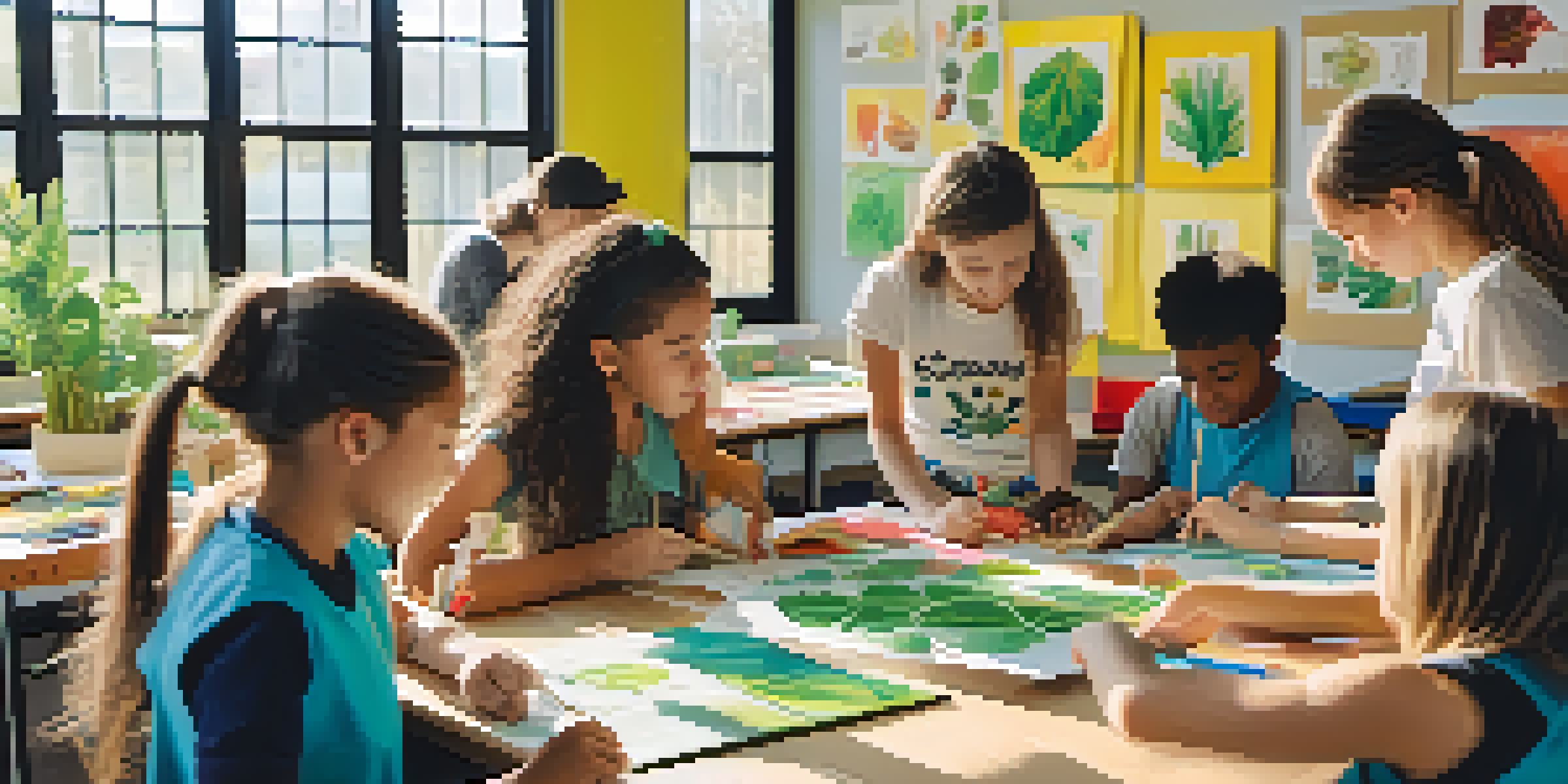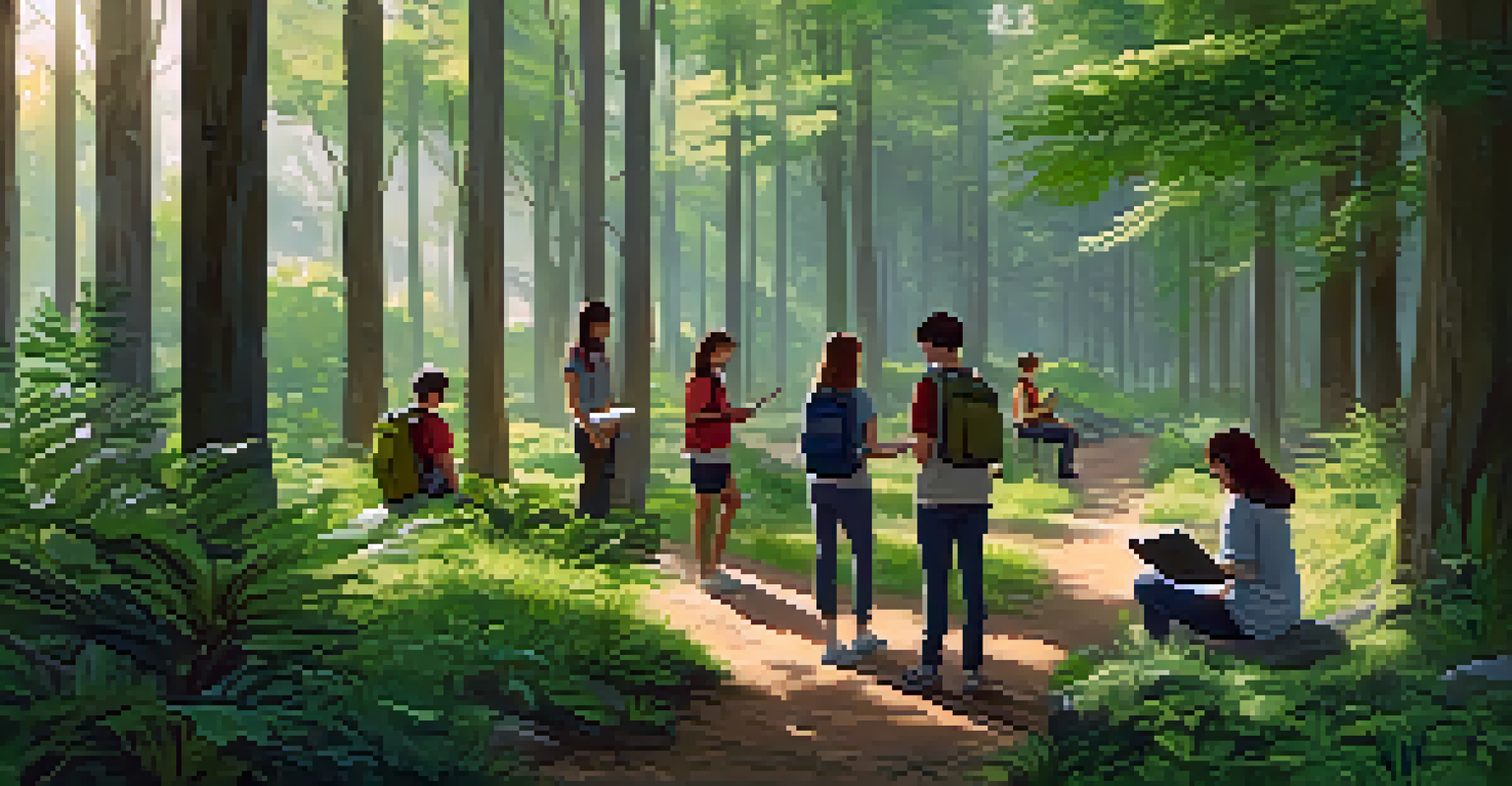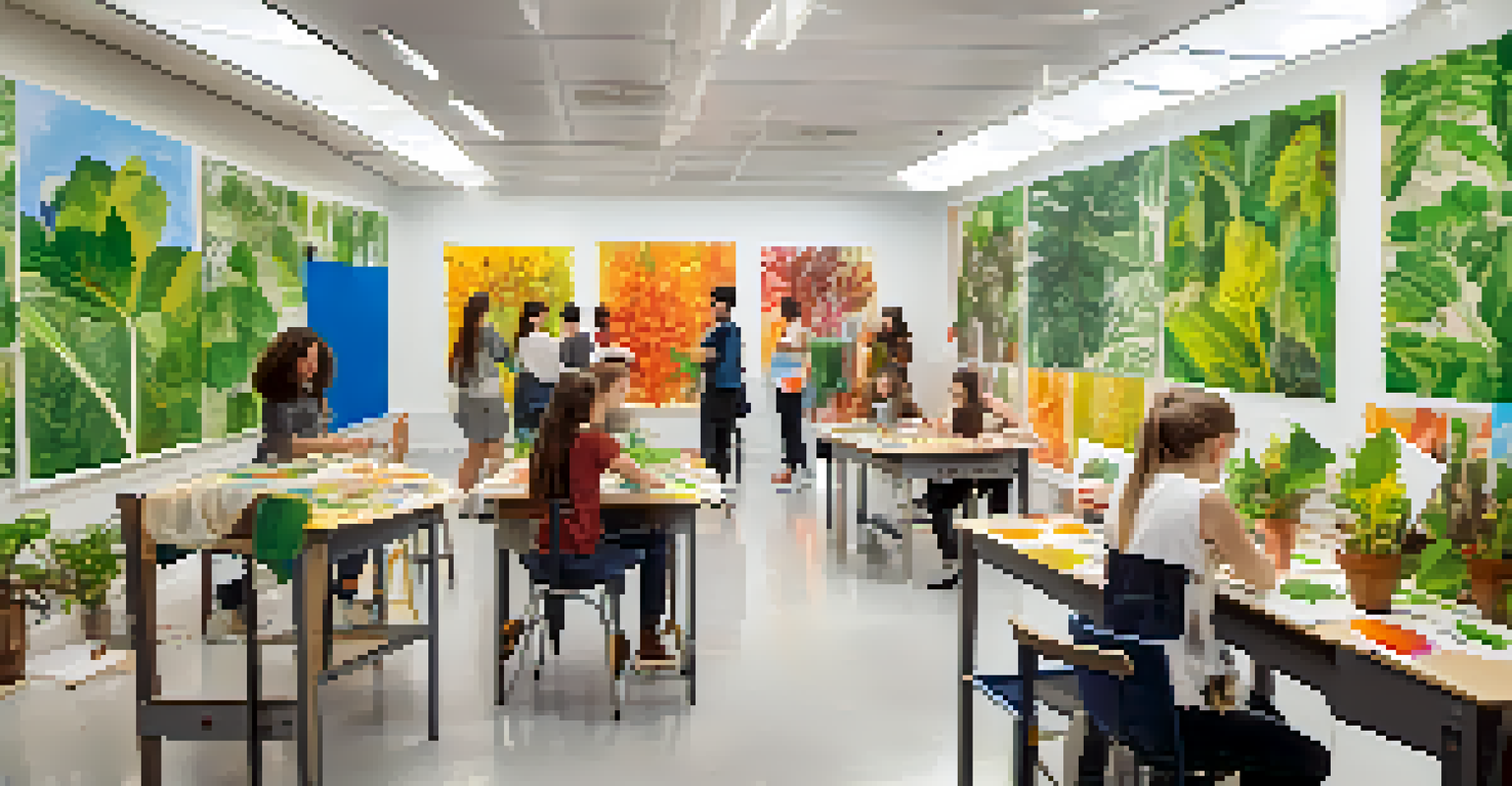Hands-On Activities for Plant-Centric Learning in Classrooms

Understanding Plant Life Cycles with Interactive Models
A hands-on approach to learning about plant life cycles can greatly enhance student understanding. By creating physical models, students can visualize each stage from seed germination to flowering. This tactile experience not only makes the concept more relatable but also encourages teamwork and collaboration among students.
The best time to plant a tree was twenty years ago. The second best time is now.
Consider using simple materials like paper, clay, or even recycled items to build these models. As they construct, students can discuss and present their findings, reinforcing their learning through teaching. This method adds a layer of creativity and critical thinking as they engage with the subject matter.
Ultimately, these interactive models serve as a powerful tool for retention. When students physically manipulate and construct their learning materials, they are more likely to remember the information. Plus, it offers a great opportunity to integrate art into science lessons, making learning even more enjoyable.
Planting Seeds: A Hands-On Gardening Project
Nothing beats the excitement of planting seeds and watching them grow! A gardening project can be an excellent way to immerse students in the world of plants. By providing each student with a small pot, soil, and various seeds, you create a personal connection to the life cycle of plants.

As students tend to their plants, they learn about responsibility, patience, and the importance of nurturing living things. This activity can be extended by having them document their plant's growth through drawings or a journal. These reflections can later be shared with classmates, fostering a sense of community and shared learning experiences.
Interactive Models Enhance Learning
Using hands-on models to visualize plant life cycles fosters teamwork and reinforces understanding.
Moreover, the act of gardening can lead to discussions about ecosystems, photosynthesis, and even healthy eating. By connecting these scientific concepts to real-life activities, you help students understand the broader implications of plant life and their impact on our environment.
Exploring Plant Diversity with Nature Walks
Taking students on nature walks can be an exciting way to explore plant diversity. These outings allow students to observe various plant species in their natural habitats, providing a real-world context for their learning. Encourage them to take notes or sketch plants they find interesting, enhancing their observational skills.
In every walk with nature one receives far more than he seeks.
During the walk, engage students in discussions about the different types of plants, their environments, and their roles in the ecosystem. This can lead to inquiries about why certain plants thrive in specific areas and the adaptations they have developed over time. Such discussions promote critical thinking and a deeper appreciation for biodiversity.
After the walk, students can create presentations or reports on their favorite plants, helping to solidify their learning. This activity not only reinforces the lesson but also fosters a sense of adventure and exploration, making science feel alive and tangible.
Creating Plant-Based Art Projects
Art and science go hand in hand, especially when it comes to plant-centric learning. By integrating art projects into your lessons, you can inspire creativity while educating students about plants. Consider activities like leaf printing or creating collages with various plant materials to illustrate different species and their characteristics.
These art projects provide a unique way for students to express their understanding of plant biology. As they work on their creations, they can discuss the features of the plants they're using, reinforcing their knowledge in a fun and engaging way. Plus, these projects can be displayed around the classroom, creating a vibrant learning environment.
Gardening Builds Responsibility
Engaging students in a gardening project teaches them patience and the importance of nurturing living things.
Ultimately, combining art with plant studies allows students to appreciate the beauty of nature while learning scientifically. It encourages them to see the connection between creativity and the natural world, fostering a holistic approach to education.
Conducting Experiments with Plant Growth Conditions
Experiments can be a thrilling way for students to learn about plant growth under various conditions. By setting up different environments—such as varying light, water, and soil types—students can observe firsthand how these factors influence plant health. This hands-on experimentation promotes inquiry-based learning, where students can formulate hypotheses and draw conclusions.
For example, you could have students grow beans in different light conditions, documenting their growth over time. Such projects encourage patience and critical thinking, as they analyze data and discuss their findings with peers. This collaborative aspect enhances their understanding and fosters communication skills.
Additionally, these experiments can lead to discussions about agriculture and sustainability. By understanding how plants grow best in certain conditions, students can connect their findings to real-world farming practices, deepening their appreciation for food sources and environmental stewardship.
Using Technology to Enhance Plant Learning
Incorporating technology into plant-centric learning can make the experience even more engaging. Tools like virtual reality (VR) or augmented reality (AR) can transport students into different ecosystems where they can explore plant life in an immersive way. This innovative approach captures students' attention and makes learning about plants exciting and dynamic.
Apps that allow students to identify plant species or track their growth can also enhance their understanding. For instance, students can photograph plants and use an identification app to learn more about their characteristics and habitats. This not only reinforces their learning but also encourages them to explore the world around them.
Technology Enriches Plant Studies
Incorporating tools like AR and VR makes learning about plants more engaging and helps students explore ecosystems.
Furthermore, using technology can foster collaboration as students work in groups to create presentations or projects about their findings. By blending traditional learning with modern tools, you create a rich educational experience that prepares students for the future while deepening their connection to the natural world.
Integrating Stories and Folklore About Plants
Storytelling can be a powerful way to engage students in plant-centric learning. Sharing folklore, myths, or even modern stories that involve plants can help students appreciate their cultural significance. This approach not only enriches their understanding but also encourages empathy towards nature.
For example, you could introduce stories about the significance of specific plants in various cultures, discussing how they are used for food, medicine, or rituals. This can lead to discussions about the interconnectedness of humans and plants, fostering a sense of respect for nature and its resources.

Additionally, having students create their own stories or skits about plants can be a fun way to reinforce their learning. This creative outlet allows them to express their ideas while deepening their understanding of plant biology and its importance in our world.